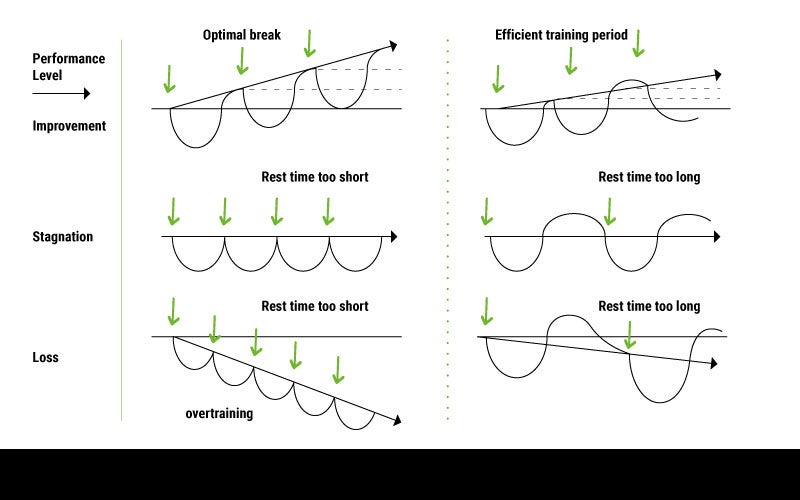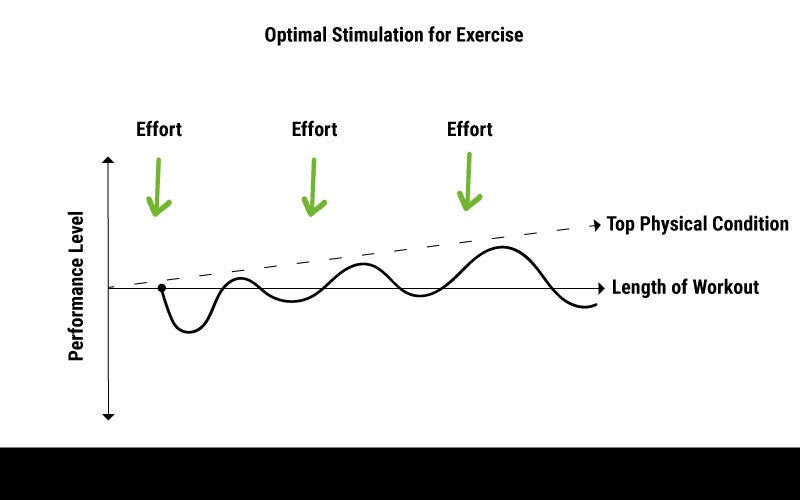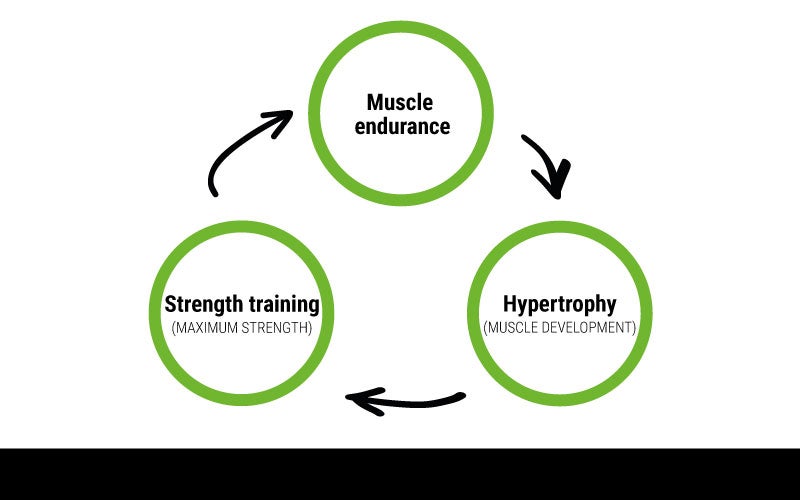The 7 Principles of Exercise: What are they, and how can they level up your fitness?
 © Hinterhaus Productions
© Hinterhaus Productions
The 7 principles of exercise are the basis for developing an optimal and effective training program. It’s simpler to do than it looks!
The 7 Principles of Exercise: Overview
The fundamental principles of exercise are the basis of physical training theory. They are based on biological rules and can help you build an effective exercise program. Below you’ll find an overview of the basics and the effects they can have on you.
| Principle of Exercise | Effect on the body |
|
1. Principle of effective training | Creates adaptations in the body |
| 4. Principle of the relationship between exercise and recovery 5. Principle of permanence and continuity 6. Principle of repetition and cycles | Cements the adaptations you’ve made |
| 7. Principle of individuality and age adaptations | Specific adaptation effects |
Principle of Effective Training

Without the right level of intensity, your workout will not trigger your body to have any physiological adaptive reactions. If it’s too easy, you won’t make new muscle cells, your endurance won’t improve, your speed won’t increase, and you may not see much progression at all.
This basic principle is explained by the overcompensation model: Without training, your body is in a state of equilibrium. With the right exercise, you cause an imbalance.
That imbalance causes your body to try to rebalance by adapting to the stimulus you’ve introduced. As a result, you get stronger, faster, tougher, and more muscular.
The optimal level of intensity depends on your general performance and physical condition. Use the following rule to figure out what the right stimulus is for you.
- Insufficient stimulation = no effect, no physiological reaction -> working out does not tire you.
- Insufficient light stimulation = balance of functions maintained -> not too easy, but not too hard either.
- Sufficient heavy stimulation = optimal, triggers physiological adaptations. Working out makes you tired. The last few workouts were difficult for you.
- Too much stimulation = functions are damaged -> training is too difficult, you cannot perform the exercises correctly, working out causes pain.
Principle of Overloading

The principle of overload dictates that the intensity level of your workout cannot remain the same forever because it will eventually stop having an effect on you. That’s because your fitness level will have adapted to the extra effort, and you’ll need to make it more intense to continue progressing. Otherwise, you may stagnate.
You can increase the difficulty of your workout in several ways:
- Increase the frequency of your workouts (number of sessions per week)
- Increase in volume (number of repetitions, length of exercise, etc.)
- Increase in density (e.g. reduced rest times)
- Increase in difficulty (e.g. increase in amount of weight you lift, or speed at which you run)
Depending on your fitness level, you can increase the difficulty of your workouts either gradually or in intervals.
If you’re a beginner, it’s better to begin by progressing gradually and increasing the volume of your workouts before the difficulty.
Principle of Variation
If your workouts remain the same, you will end up stagnating. Breaking the monotony with a new or updated routine can be just what you need to continue progressing towards your goals.
Lucky for you, our foodspring Workouts section is packed with free workout programs that you can easily do either at the gym or your home. It’s up to you to decide how difficult you want your workout to be!
There are several ways to add various levels of difficulty to your fitness plan. Here are a few ideas to help you get started:
- Incorporate new methods (like strength training or HIIT)
- Try out a new exercise
- Modify the duration of your exercises (time under tension)
- Reduce rest times
- Increase difficulty (volume and density of workouts)
- Change the way you move
Along with improving your physical fitness, adding variety to your exercise program can have a positive impact on your motivation level.
Principle of Optimal Relationship Between Exercise and Recovery
Another important basic principle is the relationship between how hard you work out and the quality of rest you get afterwards. No matter what your goal is, your muscles need time to regenerate after exercising.
If your recovery period is too short, it can reduce both the effectiveness of your workout and your motivation levels. The shorter your rest the more real the danger of overtraining and injury can become for you. On the other hand, a rest time that’s too long can cause you to lose the benefits of your intense workouts.
Eating healthy is one great way to support your body through its regeneration period.
Our tip: Give your muscles back the energy they spent with our Recovery Aminos! They contain L-Glutamine along with high quality 2:1:1 vegetable BCAAs. They’ll get you healthy carbs and plenty of energy quickly, no artificial flavors involved.
Principle of Permanence and Continuity

It takes way more than one workout to get the level of success you’re looking for. To achieve and maintain your fitness goals, it’s important to continually exercise over a long period of time.
Without continual exercise, you will return to your original fitness level and will likely have a much harder time progressing towards your goals.
Principle of Repetition and Cycles
It’s basically impossible to be at your peak physical capacities all year round, even if you’re a top athlete. Organizing your exercise in cycles builds in time for you to recover whenever you especially need to, like when you’re sick or after a marathon. That’s how the professionals train in order to be able to give their best at competitions.
And for you, it can be, too. Divide your workouts into different cycles or periods in a systematic way. You can do this by simply switching up your workouts, changing the number of series or repetitions you do during them, and taking longer or shorter rest periods as needed.
By applying this principle, you will be able to improve your performance over the long term. Alternate between cycles of intense and light training.
For strength training, this is one of the most common ways the principle is applied:

The training cycles don’t have to be the same length and you don’t have to change all the exercises every cycle.
Principle of Individuality and Age Adaptation
Your physical condition and needs play an important role in creating a fitness plan that’s right for you. Your age, anatomy, experience and past injuries should be taken into consideration as you create your exercise program. Your program must be designed for your specific goals, needs, and desires.
Your training plan should match up to your body and your needs.
Fundamentals of Exercise: Our Conclusion
- These fundamental principles help you optimize your workouts.
- The difficulty level of a workout must make you tired.
- Regularly increase the level of difficulty to progress.
- Alternate between different methods.
- Incorporate new exercises to sustain motivation and physical growth.
- Give your body the rest it needs to regenerate.
- Don’t let go! Work out regularly and consistently.
Sources for this article
We at foodspring use only high-quality sources, including peer-reviewed studies, to support the facts within our articles. Read our editorial policy to learn more about how we fact-check and keep our content accurate, reliable, and trustworthy.

































